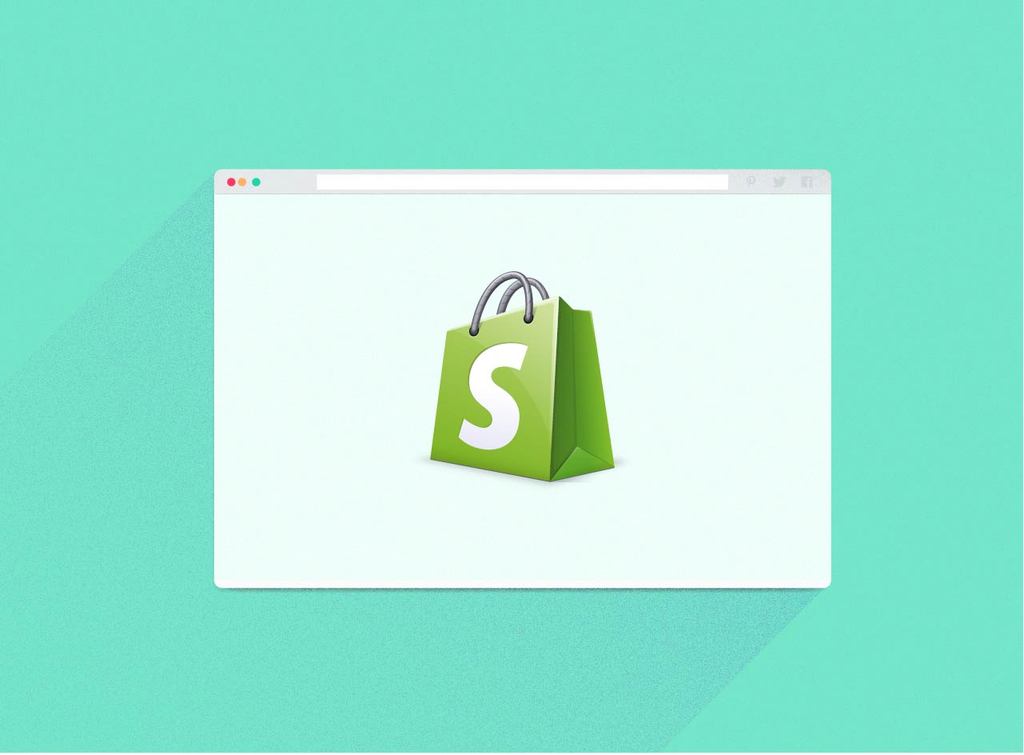Goodbye, Privacy. Hello, Convenience + Better UX Design.
A few years back, Douglas Rushkoff famously declared, “We are not the customers of Facebook… Facebook’s real customers are companies who pay them.”
Less Privacy, more UX Design?
A few years back, Douglas Rushkoff famously declared, “We are not the customers of Facebook… Facebook’s real customers are the companies who actually pay them for data, and for access to our eyeballs in the form of advertisements.”
While the comment spawned endless memes, counter-memes and generally kept many a twitter troll and media commentator entertained for a few weeks, it hints at a larger and more interesting question: “Have we, as consumers, surrendered online privacy for convenience and better user experience (UX)?”
Taken at face value the answer seems to be a resounding ‘yes’. But beyond personal experiences, the debate around online privacy is a broad-reaching one with implications for brands and consumers alike, made even more relevant by the importance of user experience (UX), customer experience (CX) and personalisation in digital services, ecommerce and communications today.
The question of data, privacy and experience.
We live in a world where enormous amounts of data is generated and captured online every day. Setting aside the general ethics of this situation, for those companies and organisations doing the data capturing, it generally falls into 2 key usage areas:
- Advertising.
User data, audience profiling and preference information is sold to 3rd–party brands and organisations for marketing purposes (usually through ads or sponsored placements).
- UX/CX and Personalisation.
Testing and piloting of new features are based on primary-source user and usage data (collected by brands across their own customers and channels). Areas that fall under this umbrella include customer experience (across communication, customer service, product and platform development activities), conversion rate optimisation (CRO) around ecommerce, advertising or CRM, or personalisation of communication, content and interactions.
For brands and organisations, the second area is really the most relevant and is critical in relation to how customer and user relationships and interactions are managed optimized. It is also the area where we have most control around the privacy practices, collection and application of customer and user data and will be our main focus in this post.
As an aspiring data-geek, I believe the questions we really need to ask are whether the general public’s lowered expectations and reality of the loss of privacy online is a bad thing and how can we ensure that the data we gather is used effectively, sustainably and carefully in UX/CX strategy, design and optimisation.
Brands and organisations need to remember that trust and privacy and have always been at the centre of creating good user experiences, and also that user data can be a double-edged sword:
- User and usage data can be an incredibly powerful tool to improve UX/CX and as a result the performance of our products, services and customer interactions.
- But it is also a tool that can quickly alienate customers if we are too overt or careless in the gathering, security and application of primary (and in some cases 3rd party) forms.
So let’s have a closer look at privacy, data and user experience and where things stand today.
So Privacy is still a thing?
Recent years have seen heightened public awareness of the issues surrounding personal privacy on the web, largely as a result of series of government surveillancescandals as well as a series of high-profile user data hacks and leaks. In fact, a2014 TRUSTe report found that almost 75% of Internet users are more worried about online privacy than they were one year ago.
Online services such as Google, Facebook and Amazon, which make use of large volumes of user information and data as a core part of their operations and monetization strategies, have become deeply embedded in our our daily lives. And generally speaking, there is a tacit agreement (though explicitly stated through terms of service) between service providers and service users which goes along the lines of “you get to use this amazing platform for free and in return we get to use your data to make money”.
So while people may not be entirely comfortable with the amount of information that these companies collect, or some of the ways they use that information, we find it difficult and deeply inconvenient stop using these services, so we don’t.
How many friends do you have who, in a fit of contrarian rebellion, committed“Facebook Suicide” in the last few years? How many are now begrudgingly back on Facebook, in no small part due to the fact that they got invited to a lot less parties…
Online services, the user experiences and value they provide have come a long way since the birth of the web, and a lot of the development and innovation has been driven by a greater ability to collect and interpret data at scale and then optimise products and services based on these insights.
The lack of online privacy is a fact that people don’t really like being reminded of, and often do their best to ignore, so this is a something that needs to be taken into account whenever using potentially sensitive personal information or data.
Privacy vs personalisation in UX and CX?
It is possible to deliver both amazing user experience and extraordinary value while safeguarding users’ privacy and security. But as important as everyone says privacy is, companies often don’t think this way. This stems from the misconception that CX/UX Design are the same thing as user interface (UI) or product/service design. The reality is that experience optimisation is so much broader and needs to be viewed holistically across the full spectrum of customer touch-points and interaction.
Ultimately, experience is incremental – user and customer opinions are constantly being formed, re-formed, improved or undermined with every interaction they have with a brand or organization. This idea necessitates that CX/UX Design are viewed and treated as the coherent sum of many parts, from branding and advertising through to customer service and support, rather than any single channel or touch-point in isolation. Just as no man is an island, CX/UX should not be viewed as an island – instead we should consider these in terms of island chains we own jointly with our customers. And just like other private owners of island chains, they value and jealously guard their privacy.
In addition privacy however, consumers are also demanding and expecting an increasing level of relevance and personalisation when they interact with brands. A recent study by customer data management platform Gigya, found that after receiving irrelevant information or products from a company, 43% of consumers ignored all future communications from the brand, while about 20% stopped buying products from the company altogether.
This is a direct conflict that can only be reconciled by transparent, permission-based data collection and application that is carefully and consistently applied across a customer’s touch-points and interactions – in other words, user experience. Also very important is the ability, clearly stated and easily initiated, to opt-out of data gathering and tracking.
This insight carries across instances where brands are interacting with audiences and customers using 3rd party data – such as retargeting in Google banner advertising. The best uses of data are the ones that provide value and go largely unnoticed (beyond satisfaction with the service or experience); the moment people have an interruptive or ‘creepy’ experience, the ‘seamlessness’ of the interface is broken. They are left feeling uncomfortable about exactly how much the companies and brands they are interacting with know about them.
Everyone who uses the web for any period of time has experienced persistent re-targeted banner ads that have followed you everywhere across the Internet (as a soul-shaming reminder of the one time you visited that website selling Jersey Shore Themed Pens). While these are often merely irritating, this ‘creepiness’ can lead to deeper discomfort with the fact that these ads are still following you 6 months after the fact…
While it is a platform that is actually collecting and applying the user data through the retargeting AdSense technology, often the backlash will fall just as much on the advertiser as it will on Google, and actively turn audiences off the messaging of the ad and brand communicating.
Moral of the story – while increased data access and platform sophistication has given brands and marketers greater powers to access and re-engage with people wherever they are, we need to be sensitive to what will be useful and relevant for customer and consumers. In other words, customer engagement strategy 101 across direct interactions as well as advertising and paid media.
Also, a quick digression/word of advice to campaign managers and planners: for the love of all that is holy, if you are going to use retargeted banners – ensure that these are contextual and action-triggered as much as possible and frequency cap your creative!
So what does all this mean?
Econsultancy recently found that only 27% of organisations and brands are able to turn all the customer and user data they capture into useful information and act on it. This suggests that at least some of this information is being captured unnecessarily – which has serious implications for user privacy. Ideally the only data we should be capturing is what is actionable and relevant to improving the user experience, rather than greedily snatching up everything in sight on the vague assumption that it might be useful or monetisable some day some how.
This can be a particularly difficult pill for brands and organisations to swallow — especially considering how rapidly personalisation and customer profiling technology is moving. At its core however, is the idea of a more agile approach of ongoing, micro-interactions and a corresponding incremental data capture approach. This strategy seeks to create tailored higher quality customer and user connections informed by more refined information sets that are almost real-time in terms of data capture, user profiling, relevance and application.
Achieving this kind of structured approach to user and customer experience is no easy task and this fact is reflected in a recent study by Forrester that found that only 11% of brands delivered “excellent” customer experience in 2014. Data-driven CX/UX Design clearly has a long way to go and because the stakes are so high, implementation efforts will only continue to accelerate across all parts of organisations. So given the sensitivity of users and customer to privacy issues, it is all the more important to build it in at the ground level of CX/UX Design strategies now or risk being left behind.
Technology departments in particular are racing to increase capability across CX/UX, and in fact the same Forrester research found that improving customer experience is the top priority for 74% of technology departments in 2015. This is important be cause while not typically customer-facing, IT departments are often the canary in the coalmine with regards to broader trends and new functional requirements. Ultimately, the increased technology focus on CX/UX, and the data infrastructure needed to support these reflects the need to create seamless personalisation of consumer and customer interactions across multiple touch-points and business areas.
Some key takeaways.
So, what are the core takeaways in terms of data and online privacy and how this impacts the way we need to approach and manage CX/UX Design? For me it is critical that we understand and incorporate the following considerations:
- Clear value and user benefits.
Reduced online privacy is a fact of life on the web but people expect that when their personal information is used by companies or organisation they will receive clear benefits or value in exchange. These benefits can come in the form of free services as with Google, or value adding, personalised content and experiences that make people’s lives easier/better.
- Trust and control.
Making customers and consumers more comfortable about sharing their personal information is all about establishing trust. Brands and organisations need to work hard to set user expectations and be transparent around what data will be used for and why, ensure security of that data and provide clear ways to control what information is used and how it is used. This needs to be consistently reinforced across every interaction and customer touch-point.
- Actionable data and insights.
To successfully integrate data into CX and UX efforts it has to be built in from the foundation with clear goals, strategy and technology resources. Having a clear plan and roadmap will help ensure that you capture the right data, implement responsive processes around user/customer profiling and user journey mapping, and have the right staff and skills in place to interpret and action these insights. Taking a holistic outcome-oriented approach to user and customer experience will mean that you capture only the data you need for clear and justifiable reasons. At the end of the day this kind of ongoing transparency will help demonstrate that you respect your customers and are committed to preserving their privacy – a key step in winning and reinforcing their trust.
- Avoiding “Creepiness”.
Great user and customer experience is all about making interactions as convenient, relevant and ultimately as natural as possible for the end user. Using private customer or user data in ways that are interruptive, irrelevant, or “creepy” will undermine both the impact of the experience and the trust of the customer. This applies to both direct brand/consumer interactions such as website usage or CRM email programmes as well as 3rd party interactions such as paid advertising.
So Privacy is a thing of the past?
Our expectations and realities of personal privacy online have changed dramatically over the last 10 years and while privacy is perhaps more relevant than ever — it is critical that we continue to invest and evolve the ways we treat user data and personal information to reflect and address user concerns and preferences.
The gradual shift in cultural attitudes to digital presence and the data footprint we create as individuals has been driven by powerful forces of new technologies, business models, user convenience/experience, and increasing complexity of daily life online. However it is still something fragile based on an implicit agreement around the exchange of tangible value that brands and organisations must not take for granted.
Technology has increased our access to real and actionable user data and expanded our ability to improve interactions and outcomes, but privacy needs to be an integral part of user and customer experience. The fact that user/customer experience is so much broader and impacts the full spectrum of touch-points means that we as marketers and brands need to consider how user data and privacy concerns should inform and influence every aspect of our interactions.
In order to achieve this we need to start with the idea that privacy is actually a fundamental part of the experience, and adopt holistic and ongoing approaches that foster trust, transparency and mutual exchange of value with the customer.



